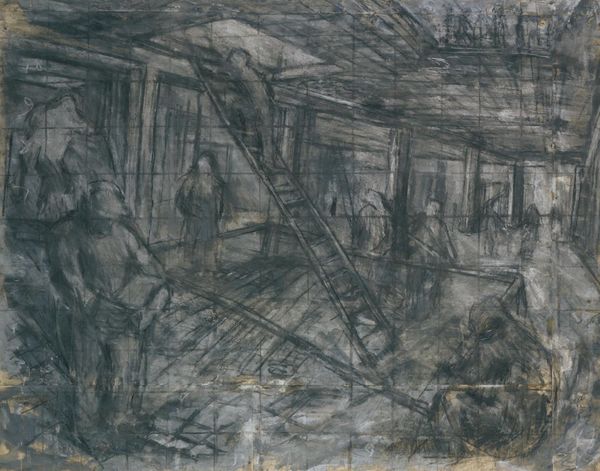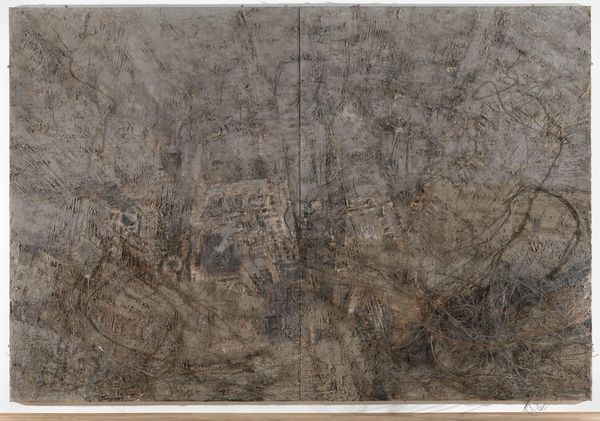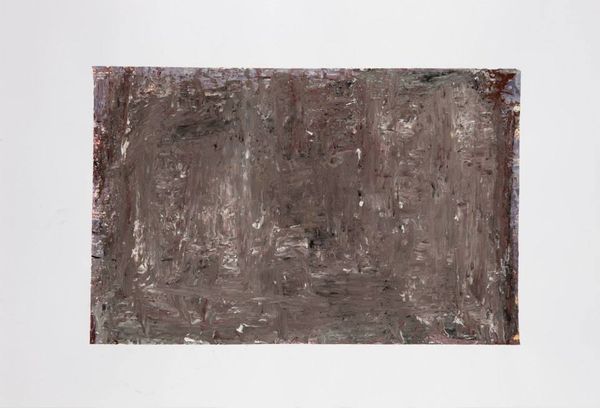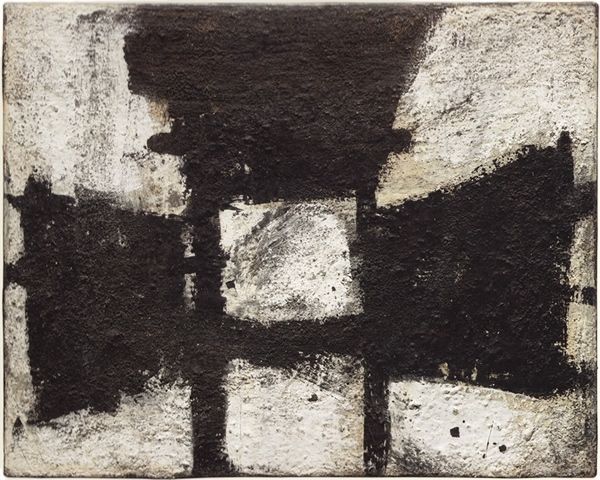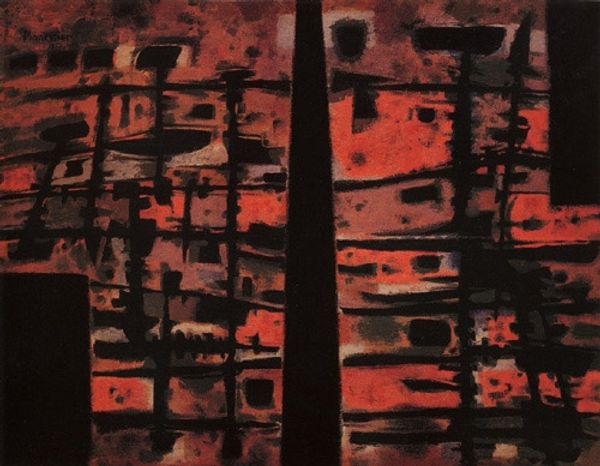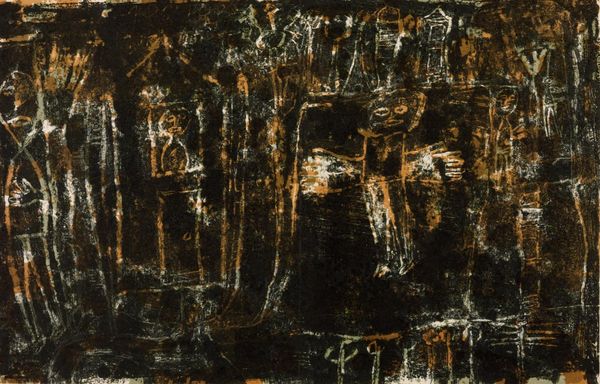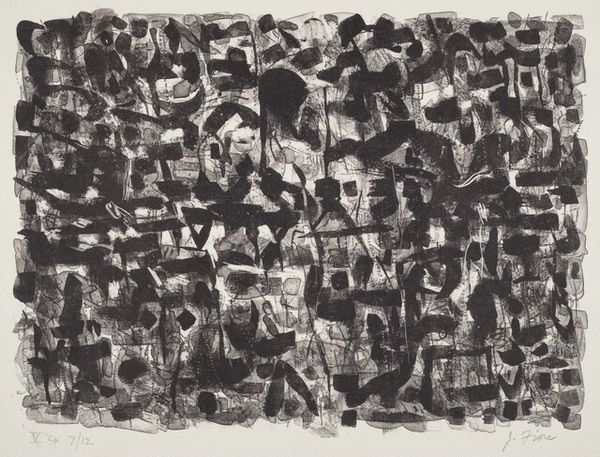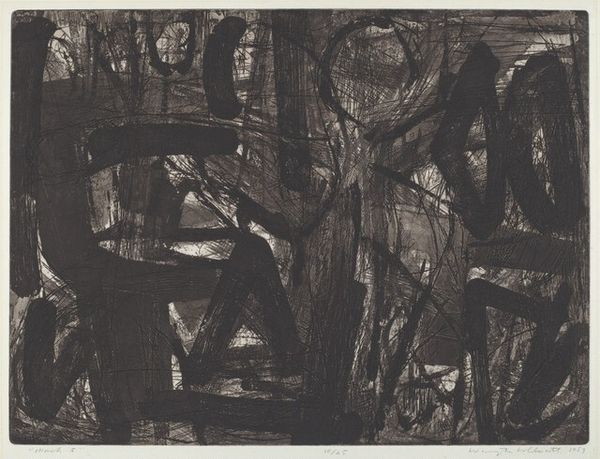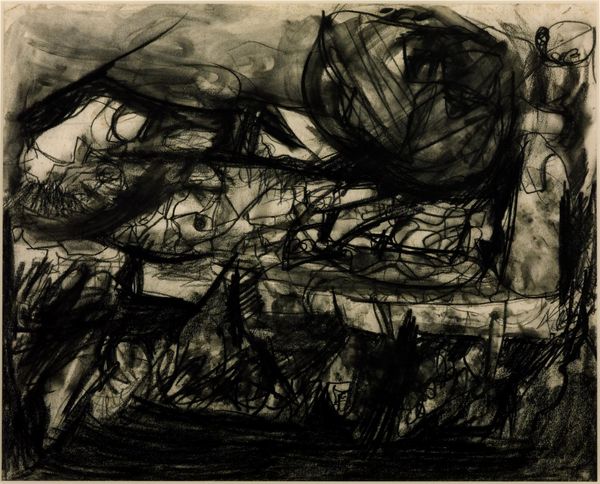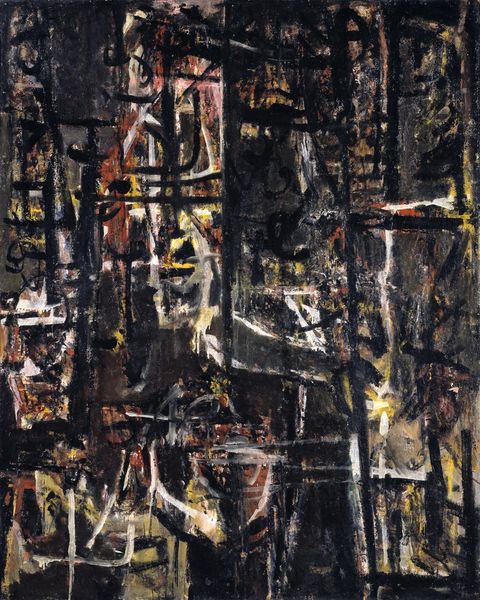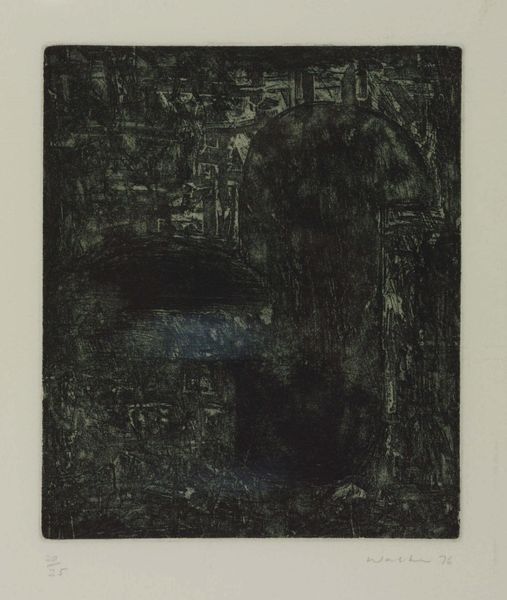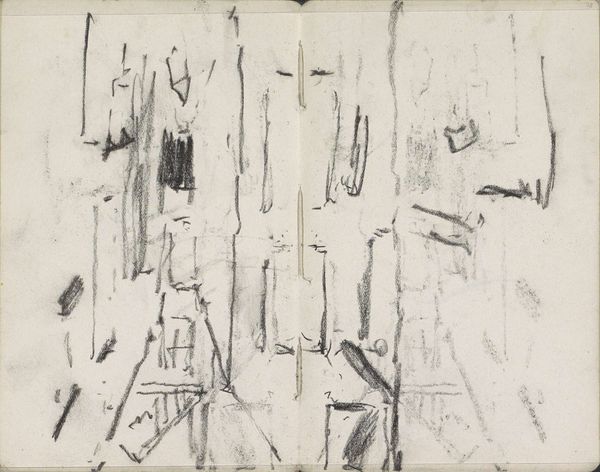
Dimensions: support: 368 x 467 mm
Copyright: CC-BY-NC-ND 4.0 DEED, Photo: Tate
Curator: Here we have Paul Klee’s “The Castle Mountain of S.” held within the Tate Collections. It strikes me as a rather brooding, almost impenetrable fortress. Editor: Yes, there's a somber quality, isn’t there? The subdued palette seems to mute any sense of welcome or invitation, more like a barrier, a city under siege perhaps. Curator: Klee’s use of architectural motifs often explores psychological space. Perhaps the castle isn’t just a structure, but a symbol of inner defenses, the self protecting itself. Editor: That rings true, especially considering Klee's historical context, witnessing the rise of fascism and increasing political polarization. The castle could represent a refuge against those encroaching forces. Curator: Absolutely, and the layering of forms and colors suggests a palimpsest, revealing layers of history and memory embedded within its walls. It's as if the very stones are saturated with cultural weight. Editor: It makes me wonder about who is being kept out, and who or what is being kept in. I think the painting is less about physical defense and more about the walls we build around identity, and the stories they hide. Curator: It’s a fascinating point. Klee invites us to ponder the symbolism of architecture, the ways in which structures shape our understanding of safety, but also confinement. Editor: Indeed. Klee provokes such important questions about architecture as a function of social exclusion or cultural memory.
Comments
tate 6 months ago
⋮
http://www.tate.org.uk/art/artworks/klee-the-castle-mountain-of-s-n05278
Join the conversation
Join millions of artists and users on Artera today and experience the ultimate creative platform.
tate 6 months ago
⋮
These two works show Klee’s great imaginative and technical versatility. In The Castle of Mountain S, the mysterious castle seems to have emerged from the artist’s process of heavily working the paint. The freer process of ‘taking a line for a walk’ animates Burdened Children showing the spontaneity that Klee associated with childhood. Gallery label, April 2008
